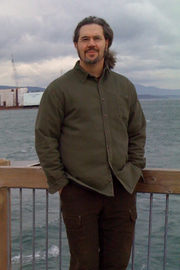
Molecular mechanisms that underlie neuronal exocytosis
Research in the Chapman Lab is focused on understanding the structure, function and dynamics of the exocytotic membrane "fusion machine" that mediates the release of neurotransmitters from neurons. These studies have begun to reveal insights into how the release machinery is regulated and thereby contributes to neuronal plasticity. Neuronal exocytosis is triggered by Ca2+ and occurs via the abrupt opening of a pre-assembled fusion pore. Subsequent dilation of the pore results in the complete fusion of the vesicle membrane with the plasma membrane.
The Lab is currently identifying and reconstituting the sequential protein-protein and protein-lipid interactions that underlie excitation-secretion coupling. To delineate this pathway, it has primarily focused on the Ca2+-binding synaptic-vesicle protein, synaptotagmin, which appears to function as the Ca2+-sensor that regulates release.
The Chapman Lab’s work is also focused on components of the "SNARE-complex", which is thought to form the core of the fusion apparatus. The rapid kinetics of exocytosis (<1 ms) indicate that only a handful of molecular rearrangements occur to couple Ca2+-synaptotagmin to the opening of the fusion pore. The Lab is using a combination of biochemical, biophysical, imaging, spectroscopic and genetic approaches to delineate the interactions/conformational changes that occur during this window of time.
Current experiments include the reconstitution of Ca2+-triggered membrane fusion in vitro, visualization of protein rearrangements and vesicle dynamics inside living cells, genetic manipulations to modulate the efficiency of synaptic transmission, time resolved electrophysiological studies to dissect individual steps in the release pathway and to manipulate the properties of the exocytotic fusion pore, and imaging approaches to monitor 'sub-quantal' exocytosis.
Other major interests are focused on the mechanism by which clostridial neurotoxins bind to and enter presynaptic nerve terminals, the selective sorting of proteins in neurons, and membrane protein interactions.
Source: http://neuro.wisc.edu/faculty/chapman.asp